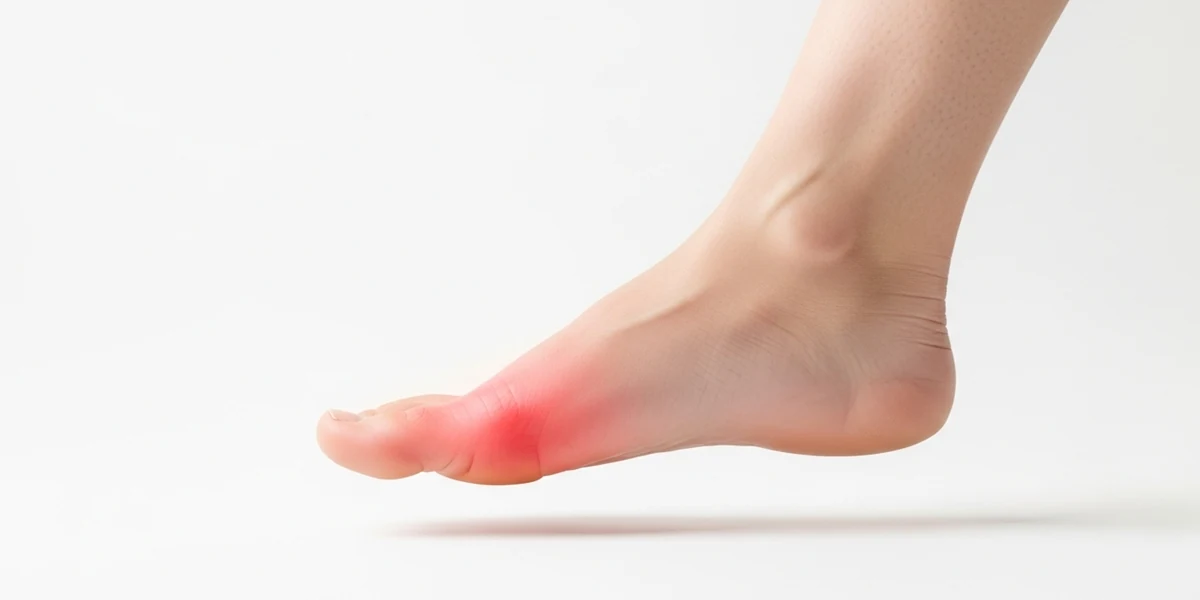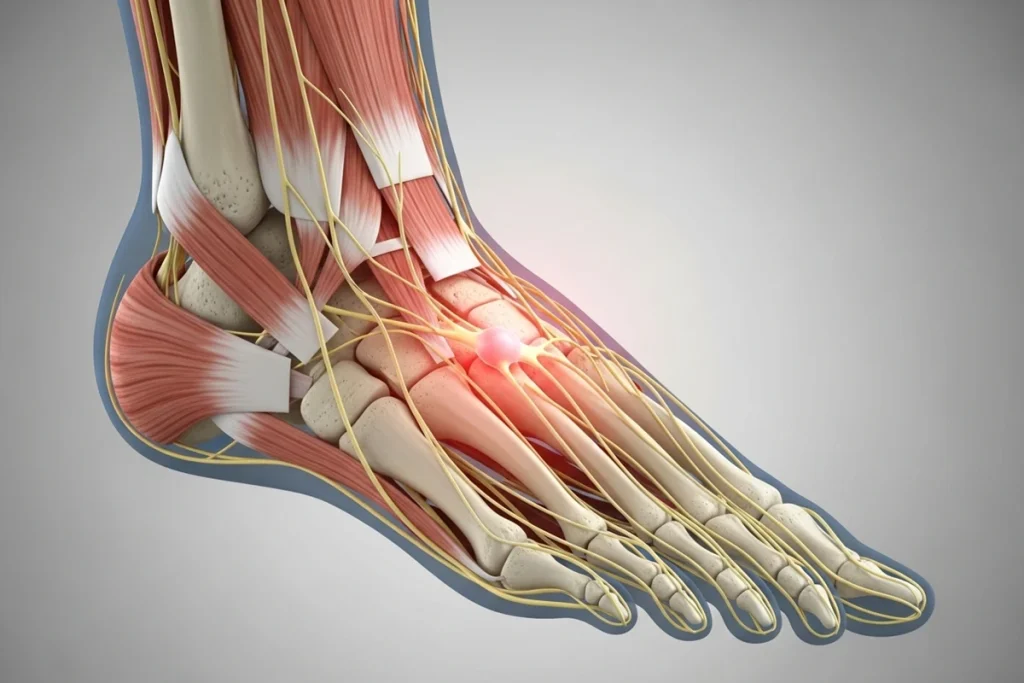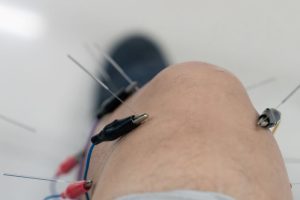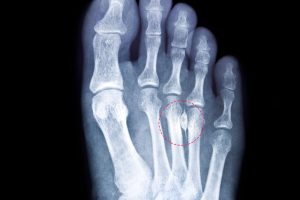If you have sharp, burning pain in the ball of your foot, you might have Morton’s neuroma. At Foot & Ankle Specialty Centers, we offer advanced diagnosis services to determine the cause of your condition, and we also offer Morton’s neuroma treatment in Mesa to help you walk comfortably once again.
Understanding Morton’s Neuroma
Morton’s neuroma is not a tumor. It happens when the nerve between your toes becomes thick, inflamed, or irritated. That extra tissue presses on the nerve and causes pain and burning under the ball of your foot. It can look like a small, raised area or a swollen spot between your toes, often between the third and fourth toes. You usually won’t see a big lump, but you might feel a tender bump or fullness in that area, especially when you press on it or wear tight shoes.
If you have the following signs and symptoms, you will most probably need Morton’s neuroma treatment in Mesa.

Common Signs and Symptoms
- Sharp, burning, or stabbing pain in the ball of your foot
- Tingling or numbness in the toes next to the neuroma
- Feeling like there’s a pebble or small object under your foot
- Pain that become worse when you wear tight shoes or walking long distances
- Relief when you remove shoes or rest
Causes
- Increased pressure on the nerve between your toe bones
- Tight shoes that squeeze your toes
- High heels that shift weight forward
- Foot deformities like bunions, hammertoes, high arches, or flat feet
- Repetitive stress from sports or long hours on your feet

Morton’s Neuromas Diagnosis and Treatment in Mesa
At Foot & Ankle Specialty Centers, first, we listen to your story and examine your foot. We press between the toes or squeeze the bones to find tenderness. Sometimes we use ultrasound or imaging to confirm.
Here are Morton’s neuroma treatments in Mesa that we may use:
Treatment | How It Works |
Shoe & lifestyle changes | We change your shoes to ones with wide toes, low heels, and better support to ease pressure. |
Orthotics / padding | We use inserts or pads to shift weight off the nerve and cushion the area. |
Anti-inflammatory meds & ice | We use medicines and cold packs to lower swelling and ease pain. |
Corticosteroid or nerve injections | We inject medicine near the nerve to calm inflammation and reduce nerve irritation. |
Minimally invasive procedures or surgery | If needed, we may reduce pressure, remove part of the nerve, or correct nearby tissue to stop pain. |
Don’t ignore foot pain; it rarely goes away on its own. Contact Foot & Ankle Specialty Centers for expert Phoenix Morton’s neuroma treatment and get back to walking comfortably again.
Prevention of Morton’s Neuroma
- Wear shoes with a wide and big toe box and a low heel
- Avoid tight, narrow, or pointy footwear
- Use cushioned, supportive shoes for activity
- Take breaks from standing or high-impact exercise
- Maintain a healthy weight and diet to reduce foot pressure
FAQs
What is the most successful Morton’s neuroma treatment in Mesa?
Success depends on how advanced your condition is. For many, orthotics, injections, and shoe changes work best. If those fail, minimally invasive surgery or nerve removal may have high success rates.
How much does Morton’s neuroma surgery cost?
Prices vary depending on the procedure type, facility, and your insurance. Please contact our Mesa office to get a personalized estimate.
When should I see a podiatrist about a neuroma?
If foot pain in the ball area lasts more than a week, or comes back repeatedly, or affects your walking, see a podiatrist early to prevent damage.
Can Morton’s neuroma come back after treatment?
Yes, it can recur, especially if risk factors remain (tight shoes, high pressure on the foot). We’ll work with you to reduce that risk.
Related Blogs

Does Acupuncture Treat Morton’s Neuroma?
Morton’s neuroma feels like you have a pebble in your shoe. It can cause sharp pain, burning, or even make your toes go numb. Most of

Numbness in Feet: Causes, Symptoms, Treatment, and More
Have you ever felt a weird tingling or numb sensation in your feet? It’s something most people experience at one time or another. Knowing why it

How to Diagnose Morton’s Neuroma?
Morton’s Neuroma causes pain in the ball of your foot and commonly makes it feel like you’re walking on a pebble. It often develops between the
